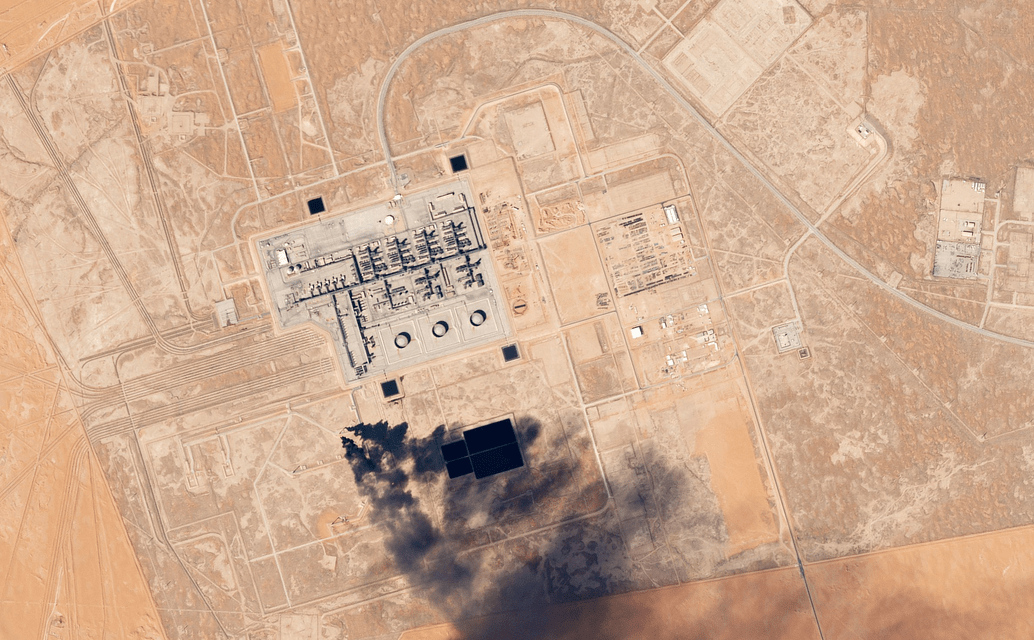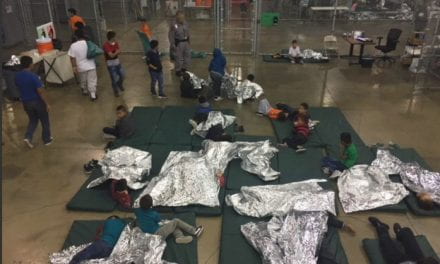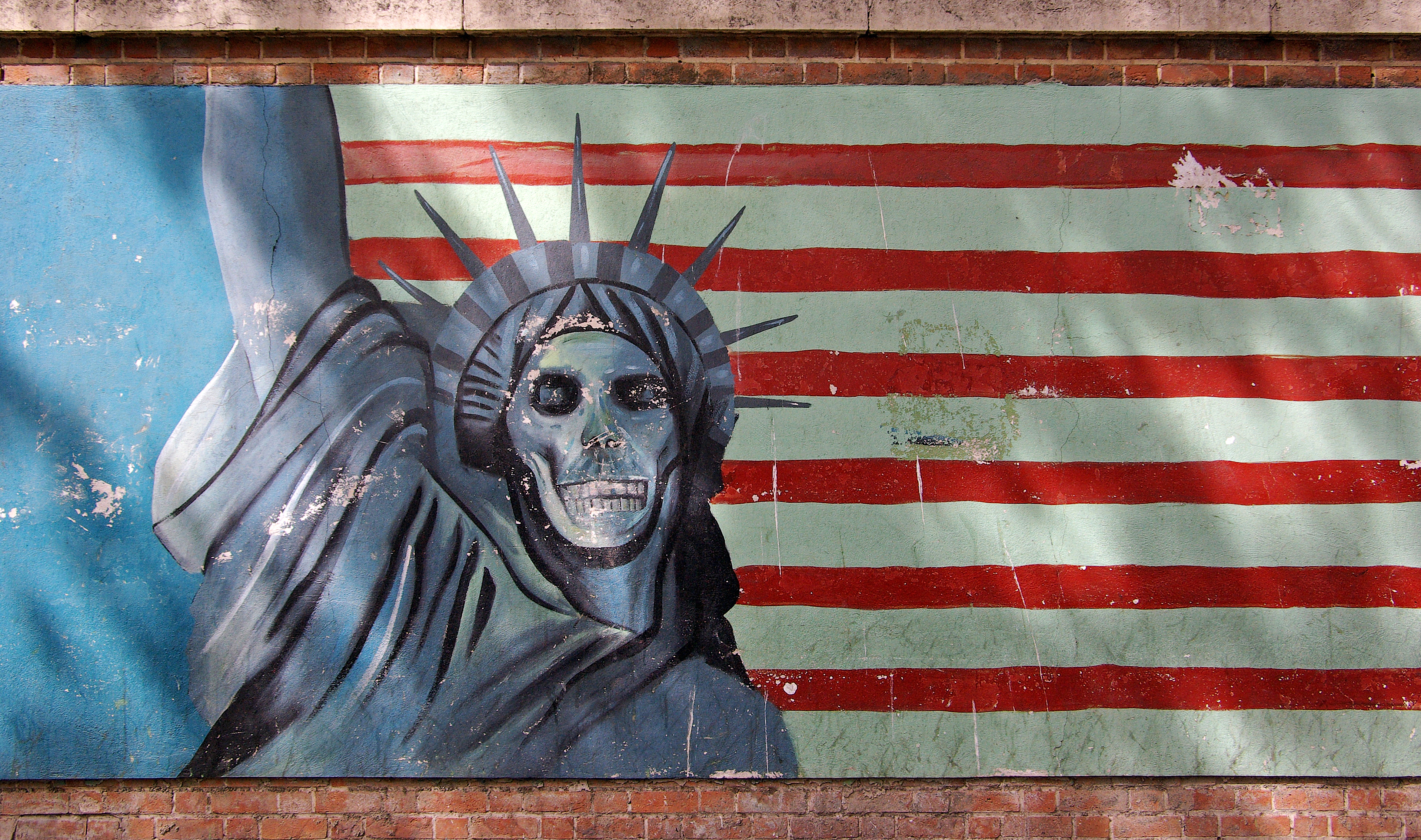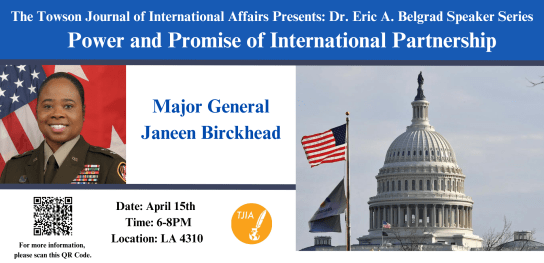The doublespeak that so often characterizes political life takes on a unique potency in the context of shadow wars. States engaged in such conflicts have a multitude of incentives to deny, distract from, and downplay their level of engagement to appease domestic and international audiences. As such, soundbites from the Rose Garden or the UN General Assembly rarely reflect operational realities. A particularly violent summer in the Persian Gulf, punctuated by an attack on two critical Saudi oil processing facilities, demonstrated the degree to which these obscurities have come to dominate the US – Iranian relationship. While Western media outlets wrestled with the uncertainties of clandestine war and the prospect of escalation, few writers placed the actions of these states in the proper historical and strategic context. This article will identify the logic and contradictions of current American policy towards the Islamic Republic of Iran and, by extension, reconcile the hostile rhetoric coming from the Trump administration with America’s perceived reluctance to escalate the conflict in the greater Persian Gulf region. With an eye towards informing future American foreign policy, it will be argued that recent American efforts to confront Iran represent a policy failure both in terms of the current administration’s stated objective of containing Iran’s sphere of influence and in terms of America’s traditional interests in the Middle East.
“Maximum Pressure” and Its Consequences
When US President Donald Trump walked away from the Joint Comprehensive Plan of Action (JCPOA) in 2017, he began to stake out a foreign policy towards Iran that was very different from that of his predecessor, Barack Obama. It was no longer multilateral diplomacy that would animate America’s relations with the Islamic Republic, but rather a penchant for overt coercion and strategic balancing. Such a realignment was necessary, according to critics of the so-called nuclear deal. While the JCPOA slowed the Iranian regime’s path towards nuclear weapons development, it did little if anything to address the country’s other destabilizing behaviors in the region, namely its ballistic missile tests and support for a vast and growing network of proxy militias. In its quest to punish the regime and renegotiate terms, the Trump administration initiated a campaign of “maximum pressure.”
A central pillar of this new strategic approach to Iran was the development of an anti-Iranian coalition united by a desire to roll back Iranian influence around the Arabian Peninsula and the Levant. In this effort, the geopolitical odd couple of Israel and Saudi Arabia was brought into the fold, forming an informal alliance with the United States characterized by intelligence sharing and weapons technology transfers.[1] The campaign also included the reimposition of economic sanctions on Iran, targeting the country’s financial, shipping, and energy sectors. Sanctions went into effect in November 2018, with the last exemption waivers for oil exports expiring in April of 2019. Since then, the Iranian economy has been saddled with high inflation and youth unemployment. Deprived of its oil revenues and increasingly isolated from the global economy, the Iranian regime now risks internal strife and the loss of its sphere of influence. Despite this, Iranian officials have remained defiant, vowing to resist American “unprovoked aggression” and even threatening to close the vital strait of Hormuz.[2]
Consequently, the summer of 2019 witnessed a degree of instability not seen in the Persian Gulf for a nearly a generation. Houthi rebels in Northern Yemen, supported by Iran in their years-long war on Saudi Arabia’s Southern border, carried out attacks on Saudi oil tankers, gas pipelines, and civilian airports for months. In May and September, rockets believed to have been launched by Pro-Iranian militias in Iraq landed inside Baghdad’s fortified “Green Zone,” which hosts the American embassy and some Western firms. In June, Iran shot down an American surveillance drone it claimed was flying through Iranian airspace, prompting president Trump to order a military strike on Iran only to cancel it minutes before execution.[3] The high-profile attacks on Saudi Aramco’s Abquiaq and Khurais oil processing facilities on September 14th were latest and most overt instance of escalation. These attacks, which consisted of strikes from both cruise missiles and unmanned drones, cut Saudi oil output by half and precipitated the largest spike in oil prices since the first Persian Gulf War. The Houthis initially claimed responsibility, but intelligence analysts have since suggested that the strikes were likely launched from the North and indicate a degree of precision inconsistent with the Houthi’s known technical abilities.[4] Members of the coalition spared no time in calling out Iran for the attacks, with US secretary of state Mike Pompeo calling the incident, “an act of war.”[5] While it is clear that Iran possesses the means and motive to carry out these attacks, its use of proxy forces allowed it to maintain plausible deniability and avoid an immediate response from the coalition.
In light of the hawkish rhetoric from many in the Trump administration and the Saudi government, many were surprised by America’s muted military response in the weeks that followed. The fact that America had implicated Iran in a series of attacks against another sovereign state under the American security umbrella was significant in the context of America’s traditional role in the region— even more so because US officials had claimed that the most recent attacks on Abquaiq and Khurais likely came from Iranian soil.[6] America has pledged to send more American soldiers and missile defense systems to Saudi Arabia, and another round of sanctions against the Iranian regime will soon be in effect.[7] However, these moves seem to be more concerned with optics than strategic motivations. A comprehensive array of American defense systems is already at the disposal of America’s allies in the gulf and the most painful economic sanctions on Iranian regime have already been in place for months. Pledges of a hard line against Iran merely obscure the fact that attacks in the region have continued to escalate only to be met with minimal swaggering by the American government. In short, Iran has called America’s bluff, and there is growing evidence to suggest that the policies being pursued by the Trump administration are ill-suited to achieve its goal of tapering Iran’s regional hegemony.
These policies have instead come at great cost to America’s credibility and create an environment where a single miscalculation could draw the US and Iran into overt conflict. Many in the region have even begun to question America’s leadership in the coalition as well as its wider security commitments in the gulf. Recent publications from around the region report that Saudi Crowned Prince Muhammed Bin Salman is now seeking to de-escalate with Iran through mediators in Iraq and Pakistan, and that the move comes as a direct result of American restraint in response to the recent attacks.[8] Muhammed Bin Zayed, head of the Emeriti government, sought a similar detente with Tehran just weeks beforehand.[9] The US-Israeli alliance remains resilient, but in a broad sense the American-led coalition is faltering, and its constituent states are now seeking a separate peace with Tehran. America is quickly losing its ability to deter strikes against its allies and infrastructure in the region, and this, of course, is to say nothing of the fact that Iran is tip-toeing its way back to producing a nuclear weapon.[10] The question remains, then— How does one reconcile America’s so-called “maximum pressure” campaign with its relatively impotent response to the violence in the Gulf?
The Logic of Current US Policy on Iran
America has traditionally been no stranger to large military and diplomatic overtures in the Middle East. Since the Second World War, American interests have in the region have consisted of maintaining the flow of oil from the Persian Gulf to the first world and protecting the sovereignty of Israel. In pursuit of those ends, America has long fought to keep any one power from establishing hegemonic authority in the region, whether it be the Soviets, the Iraqis, or most recently, the Iranians.[11] In practice, this has led to countless coups, proxy wars, and invasions being conducted by the US to keep the strait of Hormuz navigable.[12] For the Americans, such efforts were necessary to secure its own energy supply and to support the alliance structure it had cultivated in the context of the Cold War. Consequently, much of the industrialized world became reliant on the stability provided by the US Navy while the gulf monarchies increasingly outsourced their security needs to the Americans.[13] Such was the status quo in the Persian Gulf for decades.
But like many aspects of his presidency, Donald Trump has done much to subvert this status quo. The brazenly nationalist foreign policy implications of “America First” has brought with it significant changes to the world order writ large, and the Persian Gulf is no exception. Much like his critiques of the NATO alliance, Trump has called into question why the US alone spends blood and treasure to protect the sea lanes on which nearly all major economies rely. One tweet from Trump on June 24th of this year, for example, reads:
“So why are we protecting the shipping lanes for other countries (many years) for zero compensation. All of these countries should be protecting their own ships on what has always been…a dangerous journey. We don’t even need to be there in that the U.S. has just become (by far) the largest producer of Energy anywhere in the world!”[14]
Evidence of America’s shifting global priorities are being laid out in increasingly stark terms by Mr. Trump. America’s recent ascent to energy exporter status has given it new leverage in the Middle East and around the world. The so-called “shale revolution” and its effects on the global political economy cannot be understated, but American reluctance to confront Iran goes beyond its energy considerations.[15] Indeed, equally potent political forces in America, the Middle East, and the wider international community have played decisive roles in stymieing the effectiveness of the American-led coalition.
The state of the current US political landscape, for instance, suggests that the American public would not accept the costs of an overt war with Iran. Conventional wisdom might conclude that a president with waning popularity would benefit from decisive military action against a foreign adversary. While President George H.W. Bush and his son enjoyed this short-term bump in the polls from their incursions in the Middle East, it is doubtful that Trump would receive the same praise.[16] After nearly twenty years of laborious, costly counterinsurgency, Americans appear to be rejecting the prospect of a fresh conflict with a country of over 80 million people. Trump was elected in part on the premise that he would pull back from America’s foreign engagements, reflected in his stated desire to remove American troops from Syria and Afghanistan. Poll after poll has indicated that Americans do not want war with Iran, making it doubtful that Trump would risk such a move leading in to what is already sure to be a tempestuous election year.[17] Similar preferences have also been voiced by the Pentagon, as military officials have voiced the need to wind down American military commitments in the Middle East and reorient the country’s armed forces towards looming great power conflicts with Russia and China.[18] Thus, while the Israelis and Saudis would applaud a strike against Iran, an American executive seeking to confront Iran would face fierce resistance from within.
Additionally, America would likely be without support from its traditional Western allies. President Trump’s low reputation among world leaders, particularly with regards to his habit of spreading half-truths and misinformation, has left Europe feeling wary of assisting America in what could be yet another quagmire.[19] In addition, one US official who spoke to The New York Times noted that the evidence connecting the recent attacks on Saudi oil facilities to Iran was not “a slam-dunk”, echoing the infamous phrase used by ex-CIA director George Tenet in the run-up to the 2003 invasion of Iraq.[20] Even in the event that Europe believes the Trump administration, many European leaders bear resentment towards Trump’s decision to withdrawal from the JCPOA, the move largely seen as the catalyst for the growing instability.[21] For a president who favors bilateral deal-making, building any sort of multilateral coalition beyond the existing anti-Iranian coalition would be a difficult undertaking. Furthermore, any meaningful strike on Iran would likely be carried out primarily by American forces, with the Saudis and Israelis in a secondary role.
Iran’s asymmetric security doctrine has also introduced significant limitations on American military capabilities in the region. Tehran has often threatened the American coalition by warning that any attack on Iranian soil would lead to “all-out war” across the greater Middle East.[22] Tehran has ample capability to back these threats through its proxy militias, which command a formidable stretch of territory from the Zagros mountains to the Mediterranean Sea as well as other enclaves in Yemen and Afghanistan.[23] Iran-backed militias like the Popular Mobilization Forces (PMF), for instance, are deeply embedded in both the Iraqi military and political system. Many of those affiliated with these groups oppose the deployment of American soldiers in Iraq and have promised retribution in the event of a war between the US and Iran.[24] Hezbollah, Iran’s most loyal proxy force, operates in Lebanon and Syria, often hand in hand with the elite Iranian Revolutionary Guard Corps. The organization’s leadership has often claimed it would come to the aid of Iran in the event of war and has threatened to attack Israel in such a scenario.[25] That these forces would threaten American soldiers stationed in Syria, Iraq, and beyond is well within the realm of possibility. Any American attack on the Iranian homeland would not only have to account for Iran’s extensive missile defenses, topography, and ground forces, but also the prospect of a conflict stretching across the entire region.[26] In other words, the problem for the US is not merely that it has lost deterrence in the region, but that Iran has developed a potent deterrent force itself through its proxies.
Considerations for US policy
America is justified in its desire to avoid an overt war with Iran, but the patient approach being pursued by the Trump administration does little to address the threats Iran poses to stability in the Gulf beyond the nuclear issue. Yes, American sanctions might be able to bring Iran back to the negotiating table. The Iranian economy is hurting— badly. Inflation is rising, the value of the rial has plummeted, and Iranians are taking to the streets in some of the largest anti-government protests since 1979.[27] Assuming Tehran can bring themselves to trust the Americans again after the collapse of the JCPOA, the Americans might even be able to get the Iranians to agree to even more strict measures on uranium enrichment, the scope of international inspections, and perhaps even limitations on their ballistic missile development. After all, it was the sanctions regime put in place by the international community that originally got the Iranians to agree to the JCPOA. What sanctions will not do, however, is fundamentally change Iran’s regional security strategy.
Iran’s support for its proxy militias does not come from revolutionary zeal, religious fanaticism, or dreams of territorial expansion, but rather a systemic insecurity that the leadership in Tehran is acutely aware of. The disparities in conventional military capabilities between Iran and its enemies near and far are vast. The Saudis alone has a defense budget more than four times the size of Iran’s. Moreover, the arms embargo levied on Iran since the deposition of the Shah in 1979 has made equipping a modern military force slow and expensive. Alternatively, Iran’s support for proxy forces offers strategic depth at a fraction of the cost of traditional defense forces. It is a compensatory strategy uniquely suited for a beleaguered middle power in the fragmented political environment that characterizes the greater Middle East.[28] While the sanctions have been associated with modest reductions in monetary support for Iranian-backed proxies, American officials are gravely mistaken in their belief that sanctions will lead Iran and its proxy forces to abandon one another. Nothing in the foreseeable future will break the strategic and often ideological alignment between Iran and its proxy militias. Instead, the Iranian regime will spend its last dollar on its proxy forces because it believes that this is the most effective way of ensuring its survival against foreign threats.
To curtail attacks conducted by these proxy forces, the American-led coalition would do well to follow Iran’s example and leverage the plausible deniability offered by clandestine strikes. Though not without risk, allowing its regional surrogates to hit Iranian weapon stockpiles and military infrastructure in Syria, Iraq, and Yemen would allow America to raise the costs of Tehran’s own clandestine activities while denying Iran the ability to justify overt retaliation. Recent reports suggest that the coalition is already embracing a similar strategy. An Iranian oil tanker sailing through the Red Sea and several Shi’ite militia depots in Iraq were just a few of the targets in a string of unclaimed strikes on Iranian assets. While no group has claimed responsibility, the Saudis and Israelis have been implicated.[29] Such a response is needed in the short-term to re-establish deterrence around the Persian Gulf and avoid a situation where escalating Iranian aggression provokes the American-led coalition to respond with overwhelming force.
By contrast, reducing the efficacy of Iranian proxies in the region will likely require a protracted effort in Iraq and Syria. Despite America’s inclinations to disengage from the Middle East as expressed by Trump and the Pentagon, limiting the Iranian sphere of influence can only be achieved with a tangible presence on the ground. In Syria, where connections between the Assad government and the Iranian regime go back decades, opposing Iranian influence can best be achieved by disrupting Iranian supply networks. To that end, America must exercise control over strategic highways used for Iranian weapon shipments and shore up its relationships with regional allies, including the Syrian Kurds. The Israeli leadership is already cognizant of this and are reportedly lobbying the US to reaffirm its support for the Syrian Kurds in the wake of America’s capitulation to Turkish demands on the Northern Syrian border.[30] Though many media outlets have claimed that Assad has “won” the Syrian civil war by virtue of the fact that he remains the country’s president in Damascus, it is doubtful that he has the resources to reclaim much of the territory that remains in rebel control. There is still ample space for America to leverage its presence in Syria at the expense of Iran. To challenge Iran’s sphere of influence, America should support and bargain on behalf of the factions in Syria that share this interest until a political settlement in Syria is reached.
Iraq is arguably the most crucial front against Iranian influence. America’s invasion of Iraq in 2003 opened the floodgates to Iranian expansion in the Levant by removing the regime’s greatest regional rival and creating a power vacuum that the Iranians could easily fill. Restoring Iraq’s status as a strategic power that can balance Iran is the most desirable outcome for the United States. The military is only one component of the broad effort that will be required to roll back Iran’s influence, however. In Iraq, Iranian proxies and intelligence operatives are capable fighting forces, but they also aid in the construction of schools, public infrastructure, and civic institutions. As such, opposing Iran in the region will require America to make a robust diplomatic and financial commitment to bolstering a free, dynamic civil society in Iraq. Furthermore, working with the current Iraqi government to curb corruption and expand public services would provide a basis for increasing the legitimacy of America’s presence in the country and opposing Iranian influence within the political system.
None of these policies offer the quick, hands-off solution to America’s woes in the Middle East that so many Americans desire. The fundamental flaw of current US policy towards Iran, however, is the belief that the coalition can simply wait for economic sanctions to take their toll on the Iranian economy and force the leadership to capitulate to all demands. Iran has been building its sphere of influence for decades, acting opportunistically to take advantage of political instability in Iraq, Syria, Yemen, Lebanon, and Palestine. America cannot have its cake and eat it too. If the US is committed to reducing Iranian influence, protecting Israel’s sovereignty, and maintaining its traditional status as security guarantor in the Persian Gulf, it must take a similar long view.
[1] Siddiqa, Arhama, et al. Saudi-Israeli Nexus: Implications for Iran. Center of Iranian Studies in Ankara, 2019.
[2] Inskeep, Steve, and Westerman. “Iran’s Foreign Minister: ‘Abandon The Illusion’ That Tehran Will Cave To Pressure.” NPR, 23 Sept. 2019.
[3] Ross, Dennis. “Iran Is Testing the Trump Administration.” Foreign Affairs
[4] Ibid.
[5] Ibid.
[6] Ibid.
[7] “Iran Draws Washington Deeper Into the Middle East.” Stratfor, 27 Sept. 2019.
[8] “Saudis Said Moving toward Detente with Iran amid US Reluctance to Act Militarily.” The Times of Israel, 5 Oct. 2019.
“Saudi Arabia, Iran Take Steps towards Indirect Talks: Report.” Al Jazeera, 5 Oct. 2019.
[9] Sly, Liz. “The UAE’s Ambitions Backfire as It Finds Itself on the Front Line of U.S.-Iran Tensions.” The Washington Post, 12 Aug. 2019.
[10] Ruhe, Jonathan. “New Signs Iran Is Creeping Closer to Making a Nuclear Bomb.” The Hill, 12 Nov. 2019.
[11] Cook, Steven A. “This Is the Moment That Decides the Future of the Middle East.” Foreign Policy, 17 Sept. 2019.
[12] Ibid.
[13] Ibid.
[14] Trump, Donald J. Twitter, 24 June 2019.
[15] Zeihan, Peter. The Accidental Superpower: The Next Generation of American Preeminence and the Coming Global Disorder. Twelve, 2016.; O’Sullivan, Meghan L. Windfall: How the New Energy Abundance Upends Global Politics and Strengthens America’s Power. Simon & Schuster Paperbacks, 2018.
[16] “Presidential Approval Ratings — Gallup Historical Statistics and Trends.” Gallup, 11 Nov. 2019, news.gallup.com/poll/116677/presidential-approval-ratings-gallup-historical-statistics-trends.aspx.
[17] Younis, Mohamed. “Do Americans Want War With Iran?” Gallup, 20 Aug. 2019,
[18] Lamothe, Dan, and Missy Ryan. “Pentagon Urges Restraint after Strikes on Saudi Oil Facilities.” The Washington Post, 17 Sept. 2019.
[19] Sanger, David E. “Trump’s Challenge: Can His Word on Iran Be Trusted?” The New York Times, 18 Sept. 2019.
[20] Ibid.
[21] Ibid.
[22] Khalid, Tuqa. “Military Strike against Iran Would Result in ‘All-out War’: Zarif.” Reuters, 20 Sept. 2019,
[23] Chipman, John. “Iran Is Winning the War for the Middle East, and the West Has No Convincing Response.” International Institute for Strategic Studies, November 2019.;
Sadeghi-Boroujerdi, E. Strategic Depth, Counterinsurgency, & the Logic of Sectarianization: The Islamic Republic of Iran’s Security Doctrine and Its Regional Implications. In “Sectarianization: Mapping the New Politics of the Middle East”. Hurst Publishers. 2017.
[24] Stratford, Charles. “Iraq under US Pressure over Shia Militias Role Al Jazeera, 10 May 2019.;
Ali, Sangar. “Iraqi Shia Militia: Confrontation with US Troops Can Happen at Any Moment.” Kurdistan24, 6 Feb. 2018.
[25] Karam, Zeina. “Iran Could Rally Regional Proxies in Case of War with the US.”, Associated Press, 17 May 2019.
[26] Sadeghi-Boroujerdi, E. Strategic Depth, Counterinsurgency, & the Logic of Sectarianization: The Islamic Republic of Iran’s Security Doctrine and Its Regional Implications. In “Sectarianization: Mapping the New Politics of the Middle East”. Hurst Publishers. 2017.
[27] Tanchum, Micha’el. “Iran Is Already Losing.” Foreign Policy, 23 Sept. 2019.
[28] Sadeghi-Boroujerdi, E. Strategic Depth, Counterinsurgency, & the Logic of Sectarianization: The Islamic Republic of Iran’s Security Doctrine and Its Regional Implications. In “Sectarianization: Mapping the New Politics of the Middle East”. Hurst Publishers. 2017.
[29] Joffre, Tzvi. “Reports of Killed, Injured in Airstrike on Iraqi Shiite Militia Base.” The Jerusalem Post , 20 Aug. 2019.
Wintour, Patrick. “Iranian Oil Tanker Damaged by Explosions near Saudi Port City.” The Guardian, Guardian News and Media, 11 Oct. 2019.
[30] “Israel Aiding Syria’s Kurds, Advocating for Them with U.S.: Official.” Reuters, 6 Nov. 2019.







